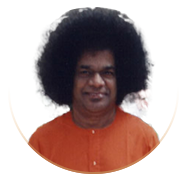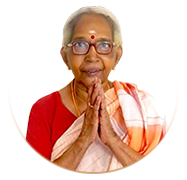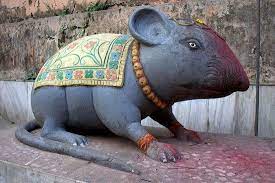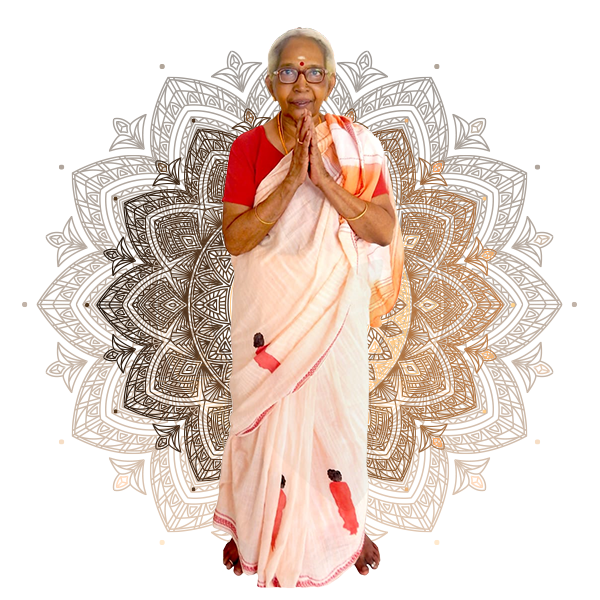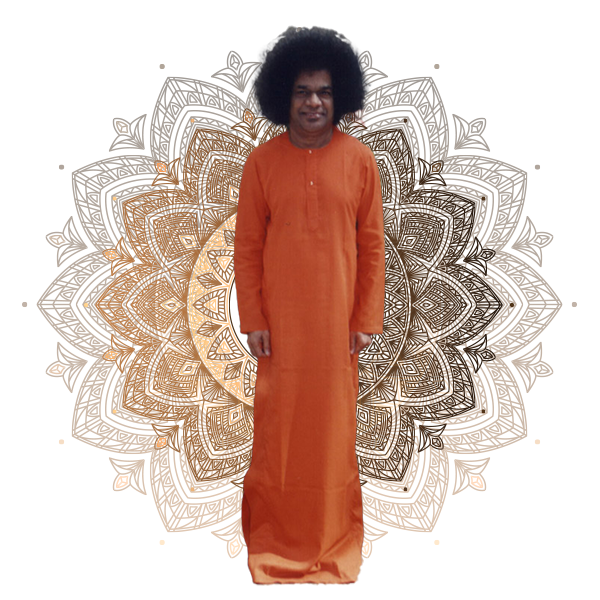Level A
1.3 >Naga Devata/Devis (Ida and Pingala)
Project Description:
Downloadexample
3.2 >108 Naga Devata/Devis
Project Description:
Downloadexample
2.0 >Sri Anjali Anjaneyar Hanuman
Project Description:
Downloadexample
DESCRIPTION
Sri Anjaneya (Hanuman)
One of the main characters of the Indian epic “Ramayana”. He was given a form of a monkey, however could change it to a brahmin when circumstances demanded. He played a key role in the mission of Lord Rama, being His messenger in “Ramayana”, helping to free Sita, (Rama`s consort) detained on Lanka, abducted by Ravana, the king of demonic clan. He is a Brahmachari (lifelong celibate) and one of the chiranjeevis. According to the Hindu mythology there is a group of Ashta-Chiranjeevis (Eight ‘Immortals’) who still live on the Earth in flesh and blood for various reasons. There is a photo of Sri Hanuman in a Himalayan cave, published in one of the books by Sri Vasantha Sai. Hanuman is God of strength, celibacy, bhakthi, knowledge and the Lord of Victory.
Source: Halinka Bykowska
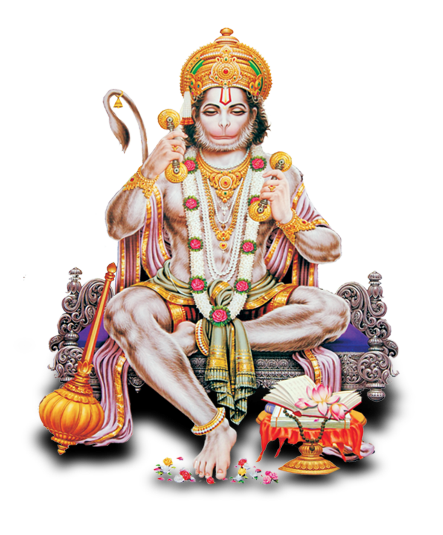

Attributes
Hanuman is the son of Vayu, the wind god, and has several extraordinary attributes, such as follows:
Chiranjivi
He is a Chiranjivi or Immortal. Many versions of Ramayana state that, just before Rama and Lakshmana left this mortal world, they blessed Hanuman that he would be immortal.
Kama-Rupin
He is a Kama-rupin – one capable of shifting his shape at will. He has the power to become smaller than an atom and larger than the largest living being. He used this quality to enter Lanka, when he went there in search of Devi Sita. Later, he took a gigantic form, emitting brilliant radiance, in order to show Sita his true power.
Very Strong
Hanuman is extraordinarily strong. He traversed across the mighty ocean with just one leap. He also effortlessly carried an entire mountain to Rama. During the war between Rama and Ravana, Lakshmana was grievously wounded. He could only be healed by a herb called Sanjeevani, which could be found only in one particular Himalayan mountain. Hanuman reached the mountain in one leap, but could not find the Sanjeevani. Not wanting to waste time, he lifted the entire mountain and carried it back to Sri Lanka, thus saving Lakshmana’s life. This is a popular iconography of Hanuman, where he is shown flying high in the sky, carrying a mountain in the palm of his hand. On account of his strength, he is called Vira, Mahavira and Mahabala.
Clever
Hanuman is also described as someone who is clever and who cannot be easily subdued by his enemies. He faced many difficult situations in his life, but always fought back and emerged the winner. In one instance, after he found Sita in Ashok Van (Ravana’s grove), he proceeded back to Rama to relay the good news to him. However, he was caught and arrested at Lanka and was imprisoned and brought before King Ravana. The latter ordered his public execution. Ravana’s guards then tied his tailed with oiled cloth and set it on fire. The clever and agile Hanuman escaped from their grasp and jumped from one palace rooftop to the other, thus burning down everything in sight. He then went to the seashore and dipped his tail in the sea, to put off the fire in his tail. This and many other stories provide ample proof of his strength and wit. In fact, many scholars aver that Rama could not have won the battle with Ravana, without Hanuman’s able support at all times.
Devoted
Hanuman is considered the most exemplary devotee of Rama. The Sundara Kanda, the fifth book in the Ramayana, speaks in detail about Hanuman and his love and devotion for Rama. Hanuman met his Lord in the last year of the latter’s 14-year exile. By this time, Ravana had kidnapped Sita and Rama was in search of her, along with his brother Lakshmana. Hindu texts such as the Bhagavata Purana, the Ananda Ramayana, the Bhakta Mala and the Ramcharitmanas portray him as a mighty, brave, highly spiritual being, entirely devoted to Rama. He is once said to have torn open his own chest to reveal the presence of Rama and Sita in his heart. This is yet another popular depiction of Hanuman, with his Ishta Devata residing in his heart.
Remover of Obstacles
In devotional literature, Hanuman is revered as the remover of obstacles. Besides, he was a highly learned scholar, had full knowledge of the Vedas and Vedantic philosophy, was a poet, singer and musician, a polymath and a grammarian par excellence.
In later literature, he is viewed as the patron God of the martial arts, acrobatics, as well as meditation and devotion and even as an incarnation of Shiva
RITUAL WORSHIP
Offerings, Rituals andPooja
There are many places in India where Hanuman is venerated as a God by himself. Wherever the holy ritual of Ramayanpath (discourse on the Ramayana) takes place, there is always a separate asan (seating space) reserved for Hanuman.
There are temples of Hanuman even at Sri Lanka (one is near Nuwara Eliya). The largest idols of Hanuman installed out of India are the ones at Trinidad and Tobago. There are, of course, unaccountable Hanuman temples in India.
An icon for strength, Hanuman is traditionally worshipped by wrestlers in India and Southeast Asia. Idols of Hanuman are also installed in temples of Vishnu and His avatars.
Installing Hanuman idols, it is believed, wards off all evil and dark forces, such as Rakshasas and the like.
Hanuman idols can also be found very often on mountain roads, as they are believed to be capable of warding off accidents.
The Hanuman Aarti is yet another famous ritual and is performed at the very end of a Puja (prayer) or Bhajan (devotional song) session.


BENEFITS OF WORSHIP
- Hanuman was the greatest devotee of Lord Rama. Hence, chanting the latter’s name is even more beneficial.
- Hanuman visited Mother Sita (the consort of Rama) in Ashokvan on a Tuesday. She blessed him, saying that those who worshipped him on that day would receive blessings from her too. Sita is considered to be an aspect of Lakshmi, the Goddess of Wealth. Hence, the devotee would receive her grace too.
- In Hindu mythology, there are only two entities that are not affected by Shani Devata (Lord ruling Saturn). These are Hanuman and Ganesha, the elephant-headed Lord. Hanuman is said to reign over the planets – it is believed that he controls them with the power of his tail. Hence, is considered that those who are devoted to him are freed from the planets’ effects.
- Worship of Hanuman (Mangalvar Vrata Vidhi) bestows immense wealth, health, peace and prosperity on devotees and their families.
MANTRA OR SLOKA FOR INVOCATION
Hanuman Chalisa
In the 16th century, poet Tulsidas penned the Hanuman Chalisa, a set of forty chaupais (verses) or quatrains dedicated to Hanuman. He is believed to have had visions, where he met Hanuman face-to-face. Even now, this hymn is considered to be sacrosanct and is chanted by Hindus all over the world.
Mantra (Chalisa) Benefit
Chanting the Hanuman Chalisa destroys the fear of death and negates the ill effects of evil. It is said that reciting the Chalisa on a daily or weekly basis (especially on Tuesdays and Saturdays) gives the devotee inner strength and liberates him from troubles.
Hanuman Moola Mantra
“Om Shri Hanumate Namah”
Meaning – “ I pray to Lord Hanuman to bestow upon my power, strength, and stamina.”
Mantra Benefit
The Hanuman Moola Mantra is usually recited religiously to overcome obstacles and problems in one’s life. It is also a very powerful success mantra (Karya siddhi mantra). It is highly suggested that those who are facing problems and obstacles after obstacles in their life should pray to Lord Hanuman. Hence, we can recite this Hanuman Mantra for getting physical strength, stamina, and power.


SPECIAL DAY OR FESTIVAL
Auspicious Day Mangalvar (Tuesday)
Tuesday is dedicated to the worship of Lord Hanuman and the planet Mars. Devotees listen to the Hanuman Chalisa (40 verses on Hanuman) and seek his blessings to ward off obstacles and negativity that may impact their lives. Many followers wear red-coloured clothing on Tuesdays and offer red flowers to Hanuman. Red coral is the gem for Tuesday.
Important Festivals
Hanuman features prominently in annual Ramlila celebrations in India and abroad. The Ramlila is a dramatic musical presentation of the Ramayana and is popular in North India and parts of Southeast Asia. It particularly refers to the thousands of dramatic plays and dance events that are staged during the annual autumn festival of Navratri in India. Hanuman is featured in many parts of the folk-enacted play of the legendary war between Good and Evil, with the celebrations climaxing in the Dussehra (Dasara, Vijayadashami) night festivities where the giant grotesque effigies of Evil such as of demon Ravana are burnt, typically with fireworks.
Some Hindus celebrate Hanuman Jayanti (his birthday), which falls in the traditional month of Chaitra in the lunisolar Hindu calendar (sometime in March/April). In parts of South India, however, Hanuman Jayanti is observed in the Tamil month of Margazhi, which falls in December/January. On this day, devotees gather at temples before sunrise and undertake day-long spiritual and ritual celebrations.
3.0 >Sri Amruteshwarar – Lord Shiva
Project Description:
Downloadexample
DESCRIPTION
Sri Amruteswarar/Lord Shiva
The Trinity of Hindu Gods, that is, Brahma, Vishnu and Shiva, are associated with Creation, Preservation and Destruction, respectively. Shiva, the “Auspicious One”, is also known to be the destroyer or transformer God among the Trimurti. Shiva is an omniscient and omnipresent yogi or mendicant, who lives the life of a sage at Mount Kailas. In Shaivism, Shiva is seen as the Supreme God.
Image-wise, he is depicted as a handsome and strong man, deeply immersed in meditation or dancing the Tandava upon Apasmara, the demon of ignorance, in his manifestation of Nataraja, the Lord of the dance. Shiva is considered as having the authority over death, rebirth and immortality – he retains his youthful looks due to this quality. He is also the father of Ganesha and Karthikeya.
Shaivism, like Vaishnavism, is a major religious movement in India. Followers of Shaivism, called Shaivas or Saivites, revere Shiva as the Supreme Being. Shaivites believe that Shiva is the Ultimate God, the Creator, Preserver, Destroyer, Revealer and Concealer.
Shiva is portrayed as a powerful and rugged youth with matted hair, vibhuti and ash smeared all over his body (this indicates Shiva’s aspect of Bhairava, who is associated with ancient Tantra and cremation-ground asceticism), having a Third Eye, wielding the Trishul or the Trident, represents the three Gunas. He wears a crescent moon on his head (which shows the control he wields over his own mind, through the waxing and waning phases of the moon) and the matted Jata on his head holds the Ganga (the flow of the Ganga implies the nectar of immortality), who constantly spouts a thin stream of water.
Normally in a highly meditative mood, Shiva opens his third eye only when he is deeply disturbed. This action usually causes massive destruction. He had once burnt down Kama, the God of Love, when the latter tried to disrupt his penance. But Shiva also occasionally opened his third eye to create as well. In the case of Karthikeya’s birth, he had initially created six sparks, which turned into six children, which fused together to make one child with six faces. This was Karthikeya or Muruga.
Shiva is blue-throated and hence, he is also referred to as Neelakantha. This occurred in the Samudra Manthan episode, wherein Shiva drank the deadly Halahala poison that churned up from the Ocean of Milk.
Shiva is often shown seated upon a tiger skin, also wearing tiger skin around his waist. This is an honour reserved only for the most powerful Hindu ascetics, the Brahmarishis. Tiger represents lust. Hence, his sitting on the tiger’s skin indicates that He has conquered lust.
Shiva rides the Nandi, the Bull. The Rishabha or the Bull represents the Dharma Devata, the Deity of Righteousness. The Ganas are his attendants. Surrounded by dance and music, accompanied by his consort Parvati, Shiva resides in the frigid peaks of Mount Kailas.
Shiva is given several opposite attributes. While he is the Destroyer, he is also considered the Benefactor. While he is concerned with the cremation ground, on the one hand, he is also considered equally auspicious. In fact, the name Shankara, means, “the one who does good”. Hence, while he is terrible and fearful in his aspect as the Mahakala, he is equally calm and benevolent in his form as the Dakshinamurthy or the Divine Teacher.
The other strange aspect of Shiva is that he is essentially a Yogi, yet, he is a loyal householder, a loving husband and a doting father of two. The form of the Ardhanarishvara, shows Shiva as the fusing of himself and Parvati in one single body.
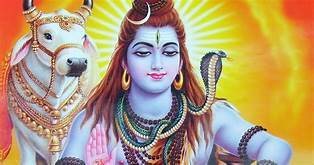
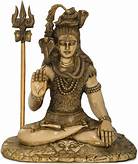
RITUAL WORSHIP
Offerings, Rituals and Pooja
Shiva is worshipped all over India and there are hundreds of temples and shrines dedicated to him, mostly in the form of a Shiva Linga and sometimes as an idol in human form. Typically, offerings to Shiva are very simple – flowers (except the Ketaki), Bel leaves, milk and sandalwood paste are supposed to please him. The prayer is a particular arati to Shiva and numerous hymns and poems in his praise.
The worship of Shiva in the form of a Linga, is very important . The Linga is commonly found in the shape of a vertical rounded column. Shiva means auspiciousness, and Linga means a sign or a symbol. Hence, the Shivalinga is regarded as a symbol of the great God, who is also the Auspicious One. The egg shape of the Linga also indicates a source of evolution – the Cosmic Egg. The taper at the top of the stone can be likened to the eternal flame of light – the source of all knowledge – or the Jyotir Linga (Jyoti indicates light).
BENEFITS OF WORSHIP
Lord Shiva is the lord of mercy. He guards the devotees since evil forces, trouble and suffering.
Shiva’s dance is associated with a specific Hindu ritual in which it is said that on every 13th evening of the bright lunar fortnight, there exists an hour called the Pradosha when, if Shiva is propitiated, it is said to be the equivalent of offering one’s worship to all powers of the cosmos. It is said that at this hour, all gods assemble at mount Kailash (Shiva’s abode) to lose themselves in the magic of Nataraja’s dance.
Shiva is often propitiated by unmarried Hindu girls because of his unsurpassed qualities of love and generosity. He is considered an ideal husband in spite of his being an ascetic and is worshipped in the hope of having a husband with his ideal characteristics.
For more please see also the Mantra Benefit tab
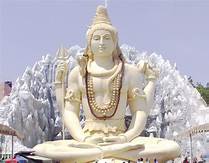

MANTRA OR SLOKA FOR INVOCATION
Mahamrityunjaya Mantra
OM. Tryambakam yajamahe Sugandhim pushti-vardhanam Urvarukamiva bandhanan Mrityor mukshiya mamritat
We Meditate on the Three-eyed reality
Which permeates and nourishes all like a fragrance.
May we are liberated from death for the sake of immortality,
Even as the cucumber is severed from bondage to the creeper.
This mantra is dedicated to Lord Shiva because Mrityunjaya is the other his name and it means who wins over death. Lord Shiva is said to be immortal and is known as the end of death.
Mantra Benefit
Lord Shiva is the most powerful in this whole universe and regular recitation of this mantra will make him happy and he can give a long life as a blessing and body free from disease and bring calmness in the face of death. This Mantra is a call for enlightenment and is a practice of purifying the karmas of the soul at a deep level. It is also said to be quite beneficial for mental, emotional, and physical health.
Panchakshari Shiva Mantra – ‘Om Namah Shivaya’
The most well-known and basic Shiva Mantra simply translates to ‘I bow to Lord Shiva’.
Mantra Benefit
It is dedicated to Lord Shiva and if chanted 108 times every day, this mantra will help you purify your body and Lord Shiva will shower his blessing on you and protect you from all the evil forces. It fills your life with positivity and happiness.
Rudra Mantra – ‘Om Namo Bhagavate Rudraya
The literal translation of this mantra is “I bow down and seek blessings from Lord Rudra”. This is one of the most powerful and simplest Rudra mantras used widely for holy chants, worship and meditation.
Mantra Benefit
This mantra will make sure all your wishes get fulfilled along with the blessings of Lord Shiva.
SPECIAL DAY OR FESTIVAL
Monday is dedicated to the worship of Lord Shiva and his consort, Goddess Parvati. Their Elephant-Headed Son, Lord Ganesha, is propitiated at the beginning of the worship. Devotees visit Shiva temples and sing in praise of the Lord on this day.
Shiva is associated with Chandra or the Moon. His color is white and the gemstone associated with him is the pearl.
The worship or the Monday fast is observed from sunrise through sunset and the fast is broken only after evening prayers. It is believed that devotees who undertake this, will be granted wisdom and will be able to fulfil all their desires. Those facing marital troubles perform this, in order to experience a better conjugal life. In some cases, unmarried women undertake this worship, in order to attract their ideal life partner.
The most important prayers to invoke and please God Shiva are also done on Pradosha, the thirteenth day of every fortnight in Hindu calendar.
Important Festivals
Maha Shivaratri
The Maha Shivaratri is the main festival of Lord Shiva. Celebrated annually on the 13th night or the 14th day of the new moon in the Krishna Paksha of the month of Maagha or Phalguna (in January or February) in the Hindu almanac. Through the night green leaves are showered on Shiva’s image. Shivaratri also marks the night when Lord Shiva married Parvati. On this sacred day, the devotees observe fast and offer fruits, flowers and Bel leaves to the Shiva Linga. Almost every year, since 1940 when Sri Sathya Sai Baba announced that He was Sai Baba ‘who came again’, the emergence of one Linga (or many) from His Body through His mouth has taken place, during the Lingodbhava muhurtha (the auspicious moment during Maha Shivaratri for the exterior manifestation of the symbol of the all-pervasive Divine Principle).


Nandi
Nandi, (‘The Happy One’) Shiva’s divine vehicle is represented as a white bull, symbolizing purity and justice. An image/statue of Nandi is placed in the outer hall of Shiva temples, and looks towards Shiva. Shiva and Nandi’s symbolic association can be traced back to the days of the Indus valley civilization. During those ancient times, dairy farming was one of the primary occupations, thus explaining the appearance of various artifacts indicating a deity much like Shiva. This deity is believed to have been worshipped as the keeper of herds. This deity over time was converted into the present day Shiva, with the bull Nandi as his primary vehicle. The name Pashupatinath – or lord of creatures – can also be ascribed to the ancient deity of the people of the Indus Valley Civilization. Nandi himself later acquired the status of a lesser God and there are several temples in India dedicated independently to Nandi. However the presence of a statue of Nandi at the gate of the Garbha Griha (sanctum sanctorum) of every Shiva temple is a must and marks the close association of Shiva with Nandi. In Sanskrit, a bull is called Vrisha, which has another connotation – that of righteousness or Dharma. Thus through Nandi, righteousness or Dharma become an integral part of Shiva’s aura.
Nagas around the Shiva
Shiva is typically depicted with a snake around his neck. Often additional snakes are depicted – one, as a sacred thread around his body, and two more, around his wrists as bracelets or his arms as armlets. Having the snakes wrapped around him suggest his control over desire and the sensual world and the lack of effect that maya (illusory world) has on him. The snakes also stand for the yogic power of kundalini, which is typically depicted as a coiled serpent lying dormant in the muladhara chakra or one of the lower spiritual levels of all beings. The serpent gradually uncoils and moves upward as one taps into his own spiritual self through yogic means. However one needs to be aware of the huge energy stored in the kundalini and must learn not only to release it but also to control it. The depiction of snakes along with Shiva, indicate that Shiva is the master of this cosmic energy and controls it the way he deems fit.

3.1 >Nandi
Project Description:
Downloadexample
DESCRIPTION
The statute of the Nandi
Nandi, (‘The Happy One’) Shiva’s divine vehicle is represented as a white bull, symbolizing purity and justice. An image/statue of Nandi is placed in the outer hall of Shiva temples, and looks towards Shiva. Shiva and Nandi’s symbolic association can be traced back to the days of the Indus valley civilization. During those ancient times, dairy farming was one of the primary occupations, thus explaining the appearance of various artifacts indicating a deity much like Shiva. This deity is believed to have been worshipped as the keeper of herds. This deity over time was converted into the present day Shiva, with the bull Nandi as his primary vehicle. The name Pashupatinath – or lord of creatures – can also be ascribed to the ancient deity of the people of the Indus Valley Civilization. Nandi himself later acquired the status of a lesser God and there are several temples in India dedicated independently to Nandi. However the presence of a statue of Nandi at the gate of the Garbha Griha (sanctum sanctorum) of every Shiva temple is a must and marks the close association of Shiva with Nandi.
According to some, Nandi is not a bull in the ordinary sense, but a divine being, and a close confidant of Lord Shiva, whose anthropomorphic form is represented by a half human and half bull body. He is known for his knowledge, devotion, obedience, surrender, virtue, and dedication to Shiva and his devotees of Shiva, and fought many battles to protect the gods, slay the demons and uphold dharma. As the vehicle of Shiva, Nandi represents knowledge, scholarship, devotion, surrender, renunciation, obedience, strength and virility.
Lord Shiva is known as Vrishabhanath, lord of the bulls. In Sanskrit, a bull is called Vrisha, which has another connotation – that of righteousness or Dharma. Thus through Nandi, righteousness or Dharma become an integral part of Shiva’s aura. On specific occasions, Hindus worship bulls and make them offerings of food. Since they are considered sacred, as in case of cows, hurting or harming them is strictly prohibited in Hinduism.
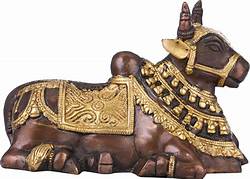
1.2 >Sri Durga Devi
Project Description:
Downloadexample
DESCRIPTION
Sri Durga
Maa Durga is Adi Parashakthi, a principal form of Hindu Goddess. Her Weapon is Chakra (discus), Shankha (conch shell), Trishula (trident), Gada (mace), Bow and Arrow. Khanda (sword), Shield and Ghanta (bell). She is the consort of Lord Shiva. Durga as Mahishasura-Mardini is the slayer of the buffalo demon. She is depicted as a Goddess riding on a lion or a tiger, with many arms – each of them is carrying a weapon. She is a Goddess of war, combating evils and demonic forces that threaten peace and prosperity. She is also a fierce form of the Protective Mother who unleashes Her Divine wrath against the wicked to liberate the oppressed.
According to a Hindu tradition there are three main forms of Durga: Mahasaraswati, Mahalakshmi and Mahakali who are active energies (Shakthis) of Brahma, Vishnu and Rudra.
Sri Vasantha Sai, the Divine Consort of Sri Sathya Sai Baba, placed Her Mangalya Sutra around the neck of the idol of Durga Devi after Bhagavan had told Her to take sanyas and start Her life in the Ashram (Mukthi Nilayam).
Source: Halinka Bykowska
Durga is considered the Adi Shakti or the Primordial Power, who created the entire Universe out of her womb. An embodiment of Prakriti or the creative feminine force, Durga, the Warrior Goddess, is both fierce and compassionate. While fighting with terrible demons, she exhibits her raging side. But with devotees, she is gentle and benevolent and grants all their wishes.
Durga – the goddess of power and strength is a multi-dimensional Goddess, with many names, many personas, and many facets. As Mahishasuramardini or Shakti, she is the destroyer of evil – with her ten mighty arms carrying lethal weapons she triumphantly slays the demon Mahishasura. As Sati, beloved daughter of King Daksha and Queen Menaka she gives up a kingdom and earns her father’s wrath. As Kali, she turns black as the night and omnipotent, terrible in rage and fury, with just a string of skulls as her garland and her only garb. As Parvati, she is serene, the pretty consort of Lord Shiva by his side in the snowy peaks of the Kailash mountain. She is Bhawani, symbol of life. She is Sati, the object of death. She is Basanti, the herald of springtime. She is also Amba, Jagadhatri, Tara, Ambika, Annapurna.
Durga, through all her forms, encompasses the essence of salvation and sacrifice. She is the mother of bounty and wealth, as also the beauty and knowledge, for her daughters are Lakshmi and Saraswati (Hindu goddesses of wealth and knowledge, respectively).
She is the embodiment of purity, knowledge, truth and self-realization. The highest form of truth present in any being or Jiva is known as “Atman” or supreme consciousness. This supreme consciousness or the absolute soul is infinite, birthless, deathless, beyond time and space, and beyond the law of causation. Goddess Durga is the inherent dynamic energy through which this supreme consciousness manifests itself.
The Divine Mother is beyond all material attributes, eternal and ever omniscient. She is beyond any change, immutable and unattainable but by yoga. She is the refuge of the universe and her nature is of pure consciousness.
IMPORTANT NOTICE
In Mukthi Nilayam, in addition to the Sri Durga Temple near Sri Gnana Mukthi Vinayaka temple, there is also Sri Durga Temple in the Building at number 111.
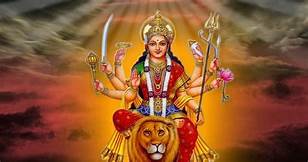
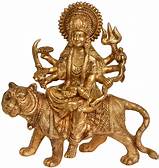
RITUAL WORSHIP
Worship of goddess Durga signifies the process by which the divine potential within every being removes its layers of ignorance and achieves the state of self-realization. Hindus celebrate this occasion at an auspicious time every year to constantly remind themselves of the significance of this very process. They contemplate the progress made on their spiritual journey and celebrate with great joy the victory of the supreme consciousness over the demons of ignorance. The Navaratri (Durga Puja or Dusshera) festival is also a reminder that evil can never triumph over the power of truth.
Offerings, Rituals and Pooja
Durga Puja (Navaratri or Dusshera) is the greatest Hindu festival in which God is adored as Mother. Hinduism is the only religion in the world, which has emphasized to such an extent the motherhood of God. Perhaps the greatest testament to the power of Durga Puja is that even today the Mother is worshipped by billions of Hindus worldwide in exactly the same manner as she was thousands of years ago.
At the Durga Puja, the most important festival of Durga, she is shown with four other deities – usually smaller in size than that of goddess Durga. Two deities are placed on each side of the main idol of goddess Durga. These deities are Kartikeya, Ganesha, Saraswati, and Lakshmi, who are commonly identified as her children. The festival of Durga Puja usually involves beautiful and larger than life clay idols of Durga and her accompanying deities.
The four days (beginning with the sixth day after the last new moon before the festival) of the festival is actually representative of the home-coming of goddess Durga along with Kartik, Ganesha, Saraswati and Lakshmi. The deities are presented with offerings throughout the festivities. On Vijayadasami, the “Victorious Tenth Day,” the idols are taken in a parade to a river or tank and immersed as a representation of bidding a tearful goodbye to the deities. This is usually a very emotional time for devout Hindus who accompany the idols to the immersion spot.
The same day sees millions of Hindus also celebrate the festival of Dusshera which marks the end of evil, as depicted by the burning of huge effigies of Ravana, Kumbhakarna and Meghnad – the three demon brothers, where among them Ravana is the king of demons. All three were defeated by Lord Rama on this day.
Other forms of festivities during the period preceding Dussehra or Vijayadashami also exist, the most popular being that of the Navaratri festival, which involves the propitiation of Goddess Durga in nine different forms called the Nava-Durga, over the nine days preceding Dussehra and starting on the first day after the last new moon preceding Dusshera. During Navaratri, each of these nine forms of goddess Durga is worshipped on a particular night for the destruction of evil and for the preservation of Dharma.
BENEFITS OF WORSHIP
Maa Durga, the inaccessible one and the invincible one, is believed to be the “one who can redeem in situations of utmost distress”.
Durga is not only a powerful force for cosmic order but also a protector of her devotees. She listens to her devotees and attends to their needs. She is a personal savior who will save her devotees from forest fires, wild animals, robbers, imprisonment, execution, and battle.
Durga symbolizes unity even in the psyche of man. Her fight against Mahisha symbolizes the fight against the darkness of evil and the ultimate victory of good over evil. This victory is not only physical in nature but also implies the inner struggle faced every day by man in all fields of his life. This struggle aims to reach man to the highest levels of Sattva or pure consciousness, where his soul meets the One Universal Soul, embodied by Durga Herself.
The seeker then reaches a state of complete bliss, which can be attained only after eliminating the base emotions or Rajas. The base emotions are embodied by the lion, which is forever under the control of the Goddess. Thus, only surrendering the mind and letting the Devi take over it, can free the seeker of this material world and grant him or her a permanent state of bliss.
The fight between Durga and Mahisha actually symbolizes our internal fight between good and evil. The slaying of Mahisha is actually the slaying of the Tamas or the impure lying within all of us.
Durga, the Mother Goddess is the symbol of all the auspicious and true qualities which define the Supreme Being. Of all her forms, Devi Durga is the ultimate representation of infinite power, purity and strength of purpose, which resides within the divine essence of every being.
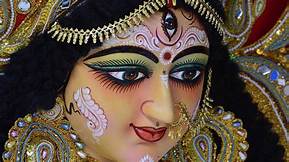

MANTRA OR SLOKA FOR INVOCATION
Mahishasuramardhini Stotram (Slokam)
“Ayi girinandini nanditamedini
Vishvavinodini nandan Krittibasute|
Girivara vindhya shirodhinivaasini
Vishnuvilaasini jishnunute|”
O, Daughter of the Mountain, the One who brings joy to the whole Earth, who makes the entire Universe rejoice, the One praised by Nandin, residing on the peak of the great Vindhya mountain; You are praised by all those desirous of victory.
The above are the first 4 lines of the Mahishasuramardhini Stotram, a hymn on the highly adored, worshipped and celebrated Devi Durga.
Durga Mantra
“Sarva Mangala Mangalye, Shive Sarvatha Sadhike
Sharanye Tryambake Gauri, Narayani Namo-Stute”
Meaning: “Auspiciousness of all things auspicious! O consort of Shiva, fulfiller of all our goals! Our only refuge! O three eyed Gauri! O Narayani! Our salutations to you.”
Mantra Benefit
This mantra is recited almost during all celebrations, rituals and events. Regular chanting can give wisdom and strength combined with a prosperous life.
SPECIAL DAY OR FESTIVAL
Auspicious Day
Durga Ashtami- The Eighth Day of Navaratri Festival
Ashtami, in particular, is celebrated with great passion and fervor. Ashtami marks the eighth day of the festival and on this auspicious day, devotees tend to observe rigorous fasts, feast and worship for Goddess Durga who symbolizes strength. A celebration of traditional culture and customs, massive idols of Goddess Durga are installed throughout India while enormous puja pandals are set up at various places for devotees to visit and worship.
Friday is dedicated to Mother Goddess – Durga Maa and Mahalakshmi, Santhoshi Ma, Annapuraneshwari. The planet associated with this day is Venus. Sweets are distributed on the day. Those fasting on the day are allowed to eat at night.
Important Festivals
Maa Durga is worshipped all over India especially during the Navaratri festival (nine nights and ten days); in India it starts on the new moon day between September and October 15th. Nine forms of Shakthi Devi are worshipped then. She is worshipped in many countries in Asia.
Source: Halinka Bykowska
In North India, the tenth day of Navratri signifies Lord Rama’s victory over the demon King, Ravana. Ram Lila sessions are conducted, wherein artists enact the story of Rama and straw effigies of Ravana are burnt in designated open spaces.
In Gujarat, the Garba dance is performed with great vigour, in order to celebrate the Goddess’ victory over Mahisha. In Maharashtra, Ambabai and Tulja Bhavani are worshipped as forms of Mahishasuramardhini.
In Tamil Nadu, people keep the Golu (or Kolu), which is a certain arrangement of dolls, and offer prayers, flowers, fruits, incense and naivedya to the deity. Women then call their female friends over for the distribution of haldi-kumkum. This is a predominantly ladies’ festival, signifying that each woman is an aspect of the Sacred Feminine.
In Bangladesh, there is a four-day long Sharadiya Durga Puja. This is celebrated with great religious fervour by all Hindus residing there.
The Durga Puja in Bengal
The Navratri festival, though, is celebrated with the most devotion and fervour in Bengal, where Goddess Durga is considered the Supreme Almighty. The four-day Durga Puja ceremony, starting from the Saptami (seventh day) to the Dashami (tenth day) is the greatest annual festival in Bengal. All through the period of the Navaratri, the Navadurga or nice aspects of Durga are meditated upon, each Devi being worshipped on one particular day of the Navratri. This type of worship is especially undertaken by Shaktas or Shakti worshippers.
See more in the tab: RITUAL WORSHIP.

1.1 >Mooshika
Project Description:
Downloadexample
DESCRIPTION
The statute of the Mooshika
The Mooshika or the rat is a stealthy animal, which is forever running around, causing a general nuisance to one and all around. The Mooshika signifies our stealthy mind, which is always looking for a crooked way out of any situation. The vahana, resting at Ganesha’s feet, signifies that the Lord takes control of a devotee who surrenders to His will. He keeps the devotee’s mind in his control, preventing it from playing havoc with the seeker, calming and soothing him down, allowing him to focus his full attention on the Lord.
The mouse is said to symbolize the equal importance of the biggest and smallest of creatures, in the eyes of the infinity of creation. Vrihadaarnyak Upanishad says that Ganesha’s vehicle is in fact a symbol of all pervasive omniscient Brahma. Like the omnipresent Brahma, a mouse stays in every household. But it is not visible all the time. Members of a household come to know about it only when its action begins to manifest.
The mouse is also interpreted as our ego. One who has controlled the ego has Ganesha consciousness or God-consciousness. According to other interpretations, the rat represents desire. A rat has a small mouth and tiny sharp teeth. But it is the greediest of all animals. Its greed and acquisitiveness are so great that it steals more than it can eat and hoards more than it can remember, often abandoning burrows full of hoarded grains through forgetfulness.
A mouse leads a clandestine life below the ground. Thus it is also a symbol of ignorance that is dominant in darkness and fears light and knowledge. As the vehicle of Lord Ganesha, a mouse teaches us to remain always on alert and illuminate our inner-self with the light of knowledge.
Lord Ganesha is the lord of knowledge and intelligence. Likewise, His vehicle, mouse, is also the symbol of wisdom, talent and intelligence. It symbolizes minute investigation of a cryptic subject.
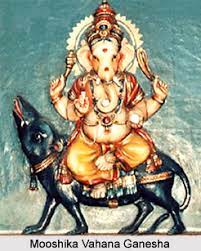
1.0 >Sri Gnana Mukthi Vinayaka/Ganesha
Project Description:
Downloadexample
DESCRIPTION
Sri Gnana Mukthi Vinayaka/Ganesha
Lord Vinayaka is also known as Ganapati and Ganesha. He is one of the best known and most worshipped deities in India and in Nepal, Sri Lanka, Thailand, Indonesia etc. He is known as the One who removes obstacles, that is why many worshippers pray to Him first. He is the Son of Lord Shiva and Mother Parvathi. No wonder His temple is situated close to the gates of the Mukthi Nilayam Ashram, the abode of Shri Sathya Sai Baba and His Mula Shakthi, Sri Vasantha Sai. ‘Gana’ – ‘Ga’ stands for Buddhi (intellect). ‘Na’ means ‘Vaijnaana’ – the highest knowledge or wisdom. Ganapathi is the Lord of the intellect and the higher knowledge. Parvathi signifies ‘Prithvi’, Mother Earth. All are children of the Earth. His vehicle is the mouse (Mooshika) which is the symbol of darkness (ignorance). Ganapathi controls the darkness of ignorance. He has a form of the elephant – the symbol of might and magnitude, removing obstacles very easily.
Source: Halinka Bykowska
Ganesha is also known as Ekdanta, or the one with one tooth, because one of his tusks is broken. The reason for this, according to Padma Purana, is that one day when Lord Shiva was sleeping, sage Parashurama came to visit him. However, Ganesha would not allow Parashurama in, for his father’s sleep would be disturbed. When Parashurama insisted he be permitted entry, a fight broke out. In the course of their struggle, Parashurama threw his axe at Ganesha. This axe had been given to Parashurama by Lord Shiva. Recognizing the axe and out of reverence for his father, Ganesha refused to intercept the weapon. He bowed and took its impact on one of his tusks, which broke. This broken tusk was used by him to write the epic, Mahabharata. Ganesha, the embodiment of wisdom, is also depicted as a scribe to whom sage Vyasa dictated the Mahabharata. He is accepted as the god of learning and the patron of letters.
Lord Ganesha is the presiding deity of the Mooladhara Chakra, which is the foundation of the evolutionary, creative or primeval energy called the Kundalini Shakthi. It is coiled up like a snake when dormant and is depicted by the snake around Lord Ganesha’s belly. When activated, this energy is said to result in an expansion of consciousness and the enlightenment of man. The snake around Lord Ganesha’s belly reminds us that we have to awaken this energy to reach the state of expanded consciousness. The snake around the belly also shows that everything in nature (the pot-belly) is supported by energy.
Lord Ganesha has four arms. The four arms represent the four inner equipment of the subtle body, namely mind (manas), intellect (buddhi), ego (ahankar) and conditioned consciousness (chitta). Lord Ganesha represents the pure consciousness – the Atman – which enables these four equipment to function in us. In one hand he holds an axe. The axe symbolizes the destruction of all desires and attachments and their consequent agitations and sorrows. The other hand is shown in a blessing pose, which signifies that Ganesha always blesses his devotees. In the third hand he holds a rice ball (modaka). Modaka represents the joyous rewards of spiritual seeking. A seeker gains joy of satisfaction and contentment as he progresses on the path of spiritual evolution. Modakam is a sweet cake. The modakam consists of an outer flour portion and an inner sweet portion. The inner sweet portion represents the supreme. The message is that man must dive within himself and transcend the outer, in order to find the inner treasure. In the fourth hand he holds a lotus. The lotus represents the supreme goal of human evolution. By holding the lotus in his hand, he draws the attention of all seekers to that supreme state that each one of them can aspire for and reach through proper spiritual practices.
IMPORTANT NOTICE
In Mukthi Nilayam, in addition to the Sri Gnana Mukthi Vinayaka temple, there are also statues of Shodasha Ganapathi, the 16 forms of Lord Vinayaka on the first prakaram of the Stupi. Shodasha Ganapathi means sixteen Ganapathi forms corresponding to 16 tithis of a lunar calendar
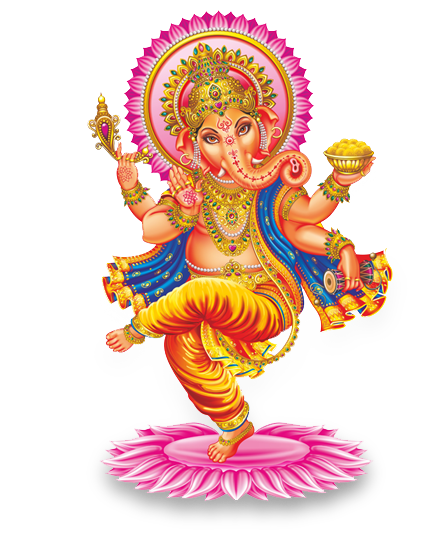
RITUAL WORSHIP
Offerings, Rituals and Pooja
Lord Ganesha is known for his intellect and wisdom. A legend explains why Ganesha is worshipped before any other deity or prior to any important event. It happened that Lord Shiva asked Kartikeya and Ganesha – his two sons – to circle the world and return. Kartikeya hurried off on his peacock, but Ganesha walked around Shiva and Parvati. He explained that for him, his parents constituted the world. Pleased, Shiva granted him a boon, saying that before undertaking any important task, people would pray to Ganesha. According to the Narasimha Purana, if he is not worshipped at the beginning of a ceremony, he creates obstacles for the performers. Therefore, no matter what the occasion or ceremony be, Ganesha is worshipped before all other deities.
Ganesha, who is largely a universally loved God, is generally worshipped before the start of any occasion, function or even business venture. Devotees also offer Ganesha sweets like modaks and laddus. He is often shown carrying a bowl of sweets, called a modakapātra. He is also sometimes worshipped with red sandalwood paste (raktacandana) or red hibiscus flowers. Durva grass or Cynodon dactylon and other materials are also used in his worship.
Being the God of Transitions, Ganesha is placed at the doorway of most Hindu temples. In fact, all Hindu temples; irrespective of who the main deity is; necessarily have at least one shrine dedicated to Vighnavinayaka. Devotees first visit this shrine, pray to Ganesha to absolve them of their sins and only then proceed to the main sanctum.
Ashtavinayaka Yatra
There are eight forms of Vinayaka, collectively referred to as Ashtavinayaka (‘Ashta’ in Sanskrit means ‘eight’). The Ashtavinayaka Yatra implies a pilgrimage to the eight Vinayaka temples, which can be found in the Indian State of Maharashtra, situated in and around the city of Pune. The Yatra follows a particular route, in a pre-ascertained sequence. Each of these ancient Ashtavinayaka temples features a distinct murti (idol) of Ganesha and has a different legend behind its existence. Undertaking an Ashtavinayaka yatra is considered to be holy and bestow a great deal of good on the devotee.
BENEFITS OF WORSHIP
Ganesha, the Hindu deity in a human form but with the head of an elephant – represents the power of the Supreme Being that removes obstacles and ensures success in human endeavours. Lord Ganesha is respected with the first honour of worship, before undertaking any auspicious occasion, or celebration. For the successful completion of any auspicious undertaking, the twelve names of Lord Ganesha are pronounced and praised. One who utters these twelve names of Ganesha while beginning one’s studies, at the time of marriage, while entering a newly constructed house, before setting off for a journey, before setting off for war, or in times of crises, does not come across any obstacles.
The twelve names of Ganesha are as follows : (1) Sumukh (One who has a beautiful face), (2) Ekdanta (Having one tooth, or tusk) (3) Kapil (Kapila – Celestial cow), (4) Gajakarna (One with ears of an elephant), (5) Lambodar (One with a large belly), (6) Vikat (One who is ferocious), (7) Vighna-Nashan (Destroyer of obstacles), (8) Vinayak (Leader), (9) Dhumraketu (the shaping of smoke into a specific form- helping Man in the formation of specific ideas from foggy thoughts), (10) Ganadhyaksha (Leader of the masses), (11) Bhalchandra (One who wears the moon on his head), (12) Gajanan (One who has the face of an elephant).
The symbol of Lord Ganesha is the Swastika. The Swastika is a basic Hindu symbol, reflecting the primary principle of Creation, personalized by Lord Ganesha. The in-depth interpretation of the direction of the swastika proves, that the ancient Oriental mind gives positive answers to the existential problem of the unity of the profane and sacred in human life.
Another symbol associated with Lord Ganesha is the OM. The sign Om is the primary sound of the creation, the holy breath of God, the primary word or the primary verb. Lord Ganesha’s form is shaped like and represents Om, which is the primeval, creative energy. When the elephant cries it produces a sound akin to the Om. The Om is the sound symbol of Brahmam, Sivam, the Eternal, the Unchanging, the substratum of all existence.
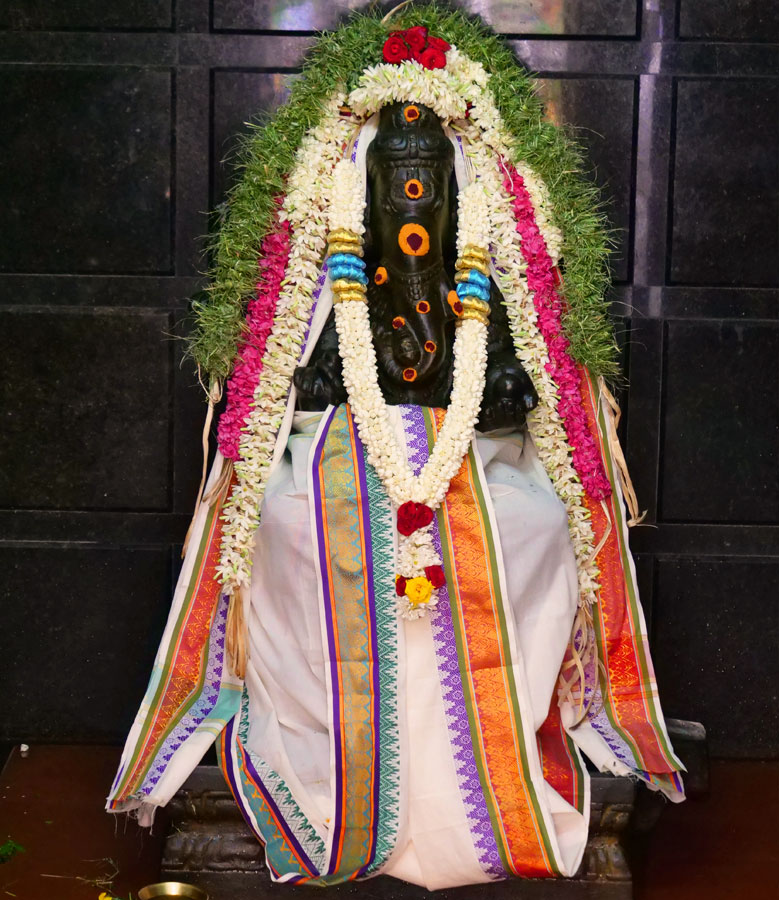
MANTRA OR SLOKA FOR INVOCATION
Hindu religious texts recommend the worshipping of Ganesha before the beginning of any religious, spiritual or worldly activity. His most popular mantras are:
“Om Shri Ganeshaya Namah”
“Om Gam Ganapataye Namah”
Mantra Benefit
Chanting this mantra with faith can get for the devotees the immense blessings of the benevolent Lord. This can result in benefits that are manifold. It can remove impediments and delays, make actions fruitful, take all beginnings to their logical end and provide success in all endeavors. Its regular chanting can also discipline the mind, improve its concentration and ability, provide good clarity of thought and bestow the capacity to convert focused thinking into fruitful action.
Vinayaka Stotra
Pranamya shirasaa devam gaurii putram vinaayakam
Bhaktaa vaasam smarenha nityam aayuh kaama artha siddhaye
The meaning of this stotra (religious hymn) is that one should bow one's head and offer obeisance before the son of Gauri, Vinayaka (or Lord Ganesha), whose abode is the devotees, and remember Him always for the purpose of obtaining longevity, desired powers and prosperity.
Stotra Benefit
This stotra is from Narada Purana, and is recited to remove all troubles and get liberation.
Ganesh Gayatri
Om Eka Dantaya Vidmahe
Vakra Thundaya Dhemahi
Thannoh Dhantih Prachodhayath
Om Shanti ... Shanti ... Shanti
Realizing that Elephant-faced One, with one tusk is God; Meditate on the One Who has a curved trunk; May He enlighten our intellect.
SPECIAL DAY OR FESTIVAL
Auspicious Day
Tuesday is considered to be the best day to worship Lord Ganesha. However, if you have full trust in the almighty, if you had faith in him then the day is just an excuse. We can worship him anytime, any day. Tuesday is dedicated to the planet Mercury. Mercury is considered to be the causative planet of intelligence.
Important Festivals
Ganesh Chaturthi
Ganesh Chaturthi, which falls in the shuklapaksha (the fourth day of the waxing moon) in the month of Bhaadrapada (August/September) is the major festival associated with the Elephant-headed Lord. This festival ends on Ananta Chaturdashi day, when Ganesh murtis or idols are immersed in a body of water. Lokmanya Tilak transformed this annual Ganesha festival from private family celebrations into a grand public event in the year 1893. This was done mainly to bridge the gap between the various Hindu sects in existence at the time. Today, this has become a global event, with people from all religions and communities coming together to pray to their favourite God. At home, an appropriately-sized clay image is installed and worshipped by offering puja and prasad (typically Modaks and laddus) with family and friends.
Ganesh Jayanti
Ganesh Jayanti, also known as Magha shukla chaturthi, is the occasion which celebrates the birth day of Ganesha, the lord of wisdom. It is a popular festival particularly in the Indian state of Maharashtra and is also celebrated in Goa held during the Shukla Paksha chaturthi day (fourth day of the bright fortnight or the waxing moon) in the month of Maagha (January/February) of every year. On the festival day, an image of Ganesha, in symbolic conical form is made out of turmeric or sindhoor powder or some times of cowdung and worshipped. It is later immersed in water on the fourth day after the festival. A special preparation made of til (sesame seeds) is offered to Ganesha and then distributed to the devotees as prasad for eating. A fast is observed before worship during the day time (which is stated to enhance the name and fame of the worshipping individual) followed by feasting in the night as a part of the rituals.
